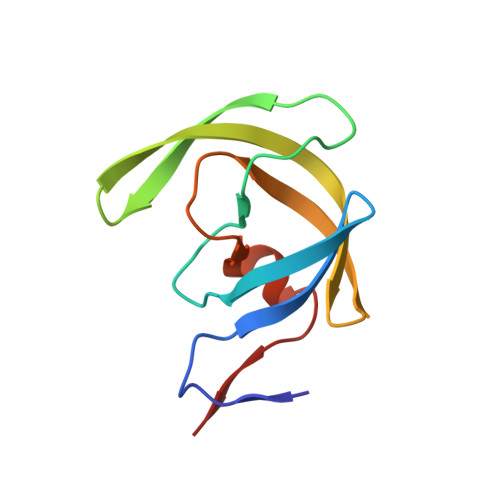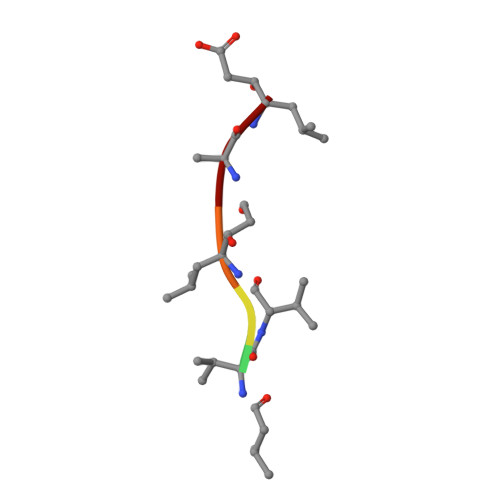Distinguishing Binders from False Positives by Free Energy Calculations: Fragment Screening Against the Flap Site of HIV Protease.
Deng, N., Forli, S., He, P., Perryman, A., Wickstrom, L., Vijayan, R.S., Tiefenbrunn, T., Stout, D., Gallicchio, E., Olson, A.J., Levy, R.M.(2015) J Phys Chem B 119: 976-988
- PubMed: 25189630
- DOI: https://doi.org/10.1021/jp506376z
- Primary Citation of Related Structures:
4TVG, 4TVH - PubMed Abstract:
Molecular docking is a powerful tool used in drug discovery and structural biology for predicting the structures of ligand-receptor complexes. However, the accuracy of docking calculations can be limited by factors such as the neglect of protein reorganization in the scoring function; as a result, ligand screening can produce a high rate of false positive hits. Although absolute binding free energy methods still have difficulty in accurately rank-ordering binders, we believe that they can be fruitfully employed to distinguish binders from nonbinders and reduce the false positive rate. Here we study a set of ligands that dock favorably to a newly discovered, potentially allosteric site on the flap of HIV-1 protease. Fragment binding to this site stabilizes a closed form of protease, which could be exploited for the design of allosteric inhibitors. Twenty-three top-ranked protein-ligand complexes from AutoDock were subject to the free energy screening using two methods, the recently developed binding energy analysis method (BEDAM) and the standard double decoupling method (DDM). Free energy calculations correctly identified most of the false positives (≥83%) and recovered all the confirmed binders. The results show a gap averaging ≥3.7 kcal/mol, separating the binders and the false positives. We present a formula that decomposes the binding free energy into contributions from the receptor conformational macrostates, which provides insights into the roles of different binding modes. Our binding free energy component analysis further suggests that improving the treatment for the desolvation penalty associated with the unfulfilled polar groups could reduce the rate of false positive hits in docking. The current study demonstrates that the combination of docking with free energy methods can be very useful for more accurate ligand screening against valuable drug targets.
Organizational Affiliation:
Center for Biophysics & Computational Biology/ICMS, ‡Department of Chemistry, Temple University , Philadelphia, Pennsylvania19122, United States.


















